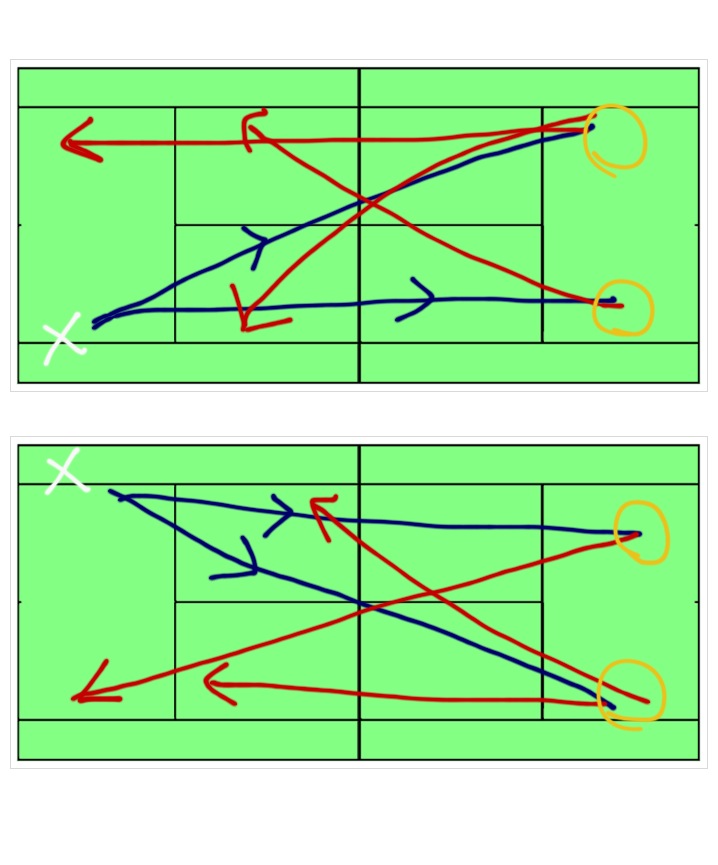The hand to eye coordination needed to play baseball is one of the most demanding in any sport. Players, whether juniors, college or MLB pros, spend hundreds of hours per year in the batting cages to groove their swing and improve their hand to eye coordination in order to find the sweet spot when it matters. Working on the fundamentals - even for players who have mastered the game - is a continuing process. Hitches and kinks in the stroke appear all the time so it's important for the players to go back to the basics in order to correct the motion.
For some reason, however, American juniors have an aversion to a similar training tool that is available to tennis players: the ball machine. Why is that?! Do you think that because you have a bigger racket head that somehow the ball is easier to hit?! Let's put it this way, the average strike zone for baseball is a mere 500 square inches (basically, that's the width of the home-plate x distance between chest and knees) [yeah, yeah, some baseball players will probably want to debate this...not interested]. In addition, the baseball bat sweet spot is not bigger or smaller than the sweet spot of the tennis racket. In tennis, however, the opponent does not have to hit the ball TO you. The tennis "strike zone" is a whole lot greater: width of tennis court (27 FEET) x length (39 FEET) x height at which contact can be made (e.g., high backhands/forehands, overheads, low slices and drop shots, etc.) (let's say 7 FEET). That's an area of SEVEN THOUSAND THREE HUNDRED AND SEVENTY-ONE CUBIC FEET (7,371ft3). As tennis player, you have to become proficient at hitting the ball FROM anywhere (in your court) TO anywhere (in the opponent's court). Furthermore, the skill necessary to accomplish this task resembles hunting with a spear (or bow and arrow): you have to hit a moving target (prey) with a moving object (weapon) while you yourself are on the run. Same concept applies to tennis: you have to hit a moving object (the ball) with a moving object (racket) while you yourself are in motion (sometimes more, sometimes less)....and you have to hit the court... and maybe keep it away from the opponent. This is not just hand-to-eye coordination - it's hand-to-eye-feet corrdination (and you have to do it over and over again throughout the match). And yet, not many players deem it worthwhile to groove their strokes on the ball machine. Then, they wonder why the shots aren't going in during a match. There's simply no better way hit 2-3000 balls per day than on the ball machine. Done right, this becomes purposeful practice. So try this:

In the diagrams above, the white "X" represents the placement of the ball machine and the yellow circle represents the contact point (more or less). The blue line is the path of the ball FROM the ball machine; the red lines are the paths of the ball FROM you. Instead of setting up the ball machine in the MIDDLE of the court, place it off-center (WAY off-center) and practice changing the direction of the ball. Rather than doing side-to-sides for 7 minutes and then quitting (because you're not used to hitting 300 balls in a row), practice hitting from a set location while keeping "light" feet...learn the "dance" steps immediately preceding the contact; hit and recover (or, like boxing, "stick and move"). Changing the direction of the ball is usually where all the unforced errors in tennis take place. So reduce the likelihood of mistakes by learning how to adjust for every angle. That is, how to hit a cross-court from a down-the-line; down- the-line from a cross-court; or a sharper cross-court from a cross-court. Again, keep your feet moving and groove your strokes (to the point where they're "in your blood"; AUTOMATIC) so that they don't break down under pressure. Supplement your lessons with ball machine training since, it's not only important to learn a good shot (something that lessons are intended to accomplish) but also to FORGET the bad strokes. To use an analogy, tennis is a lot like sculpting a statue: you have to do the hard chiseling and hammering work; the master (tennis pro) is the one who helps you bring out the details with the fine sandpaper...but then it's back to the chiseling and hammering work. This is YOUR project, not your coach's, so make sure that you take ownership of it.
 Wednesday, October 26, 2011 at 11:51AM
Wednesday, October 26, 2011 at 11:51AM  CAtennis
CAtennis 
Reader Comments